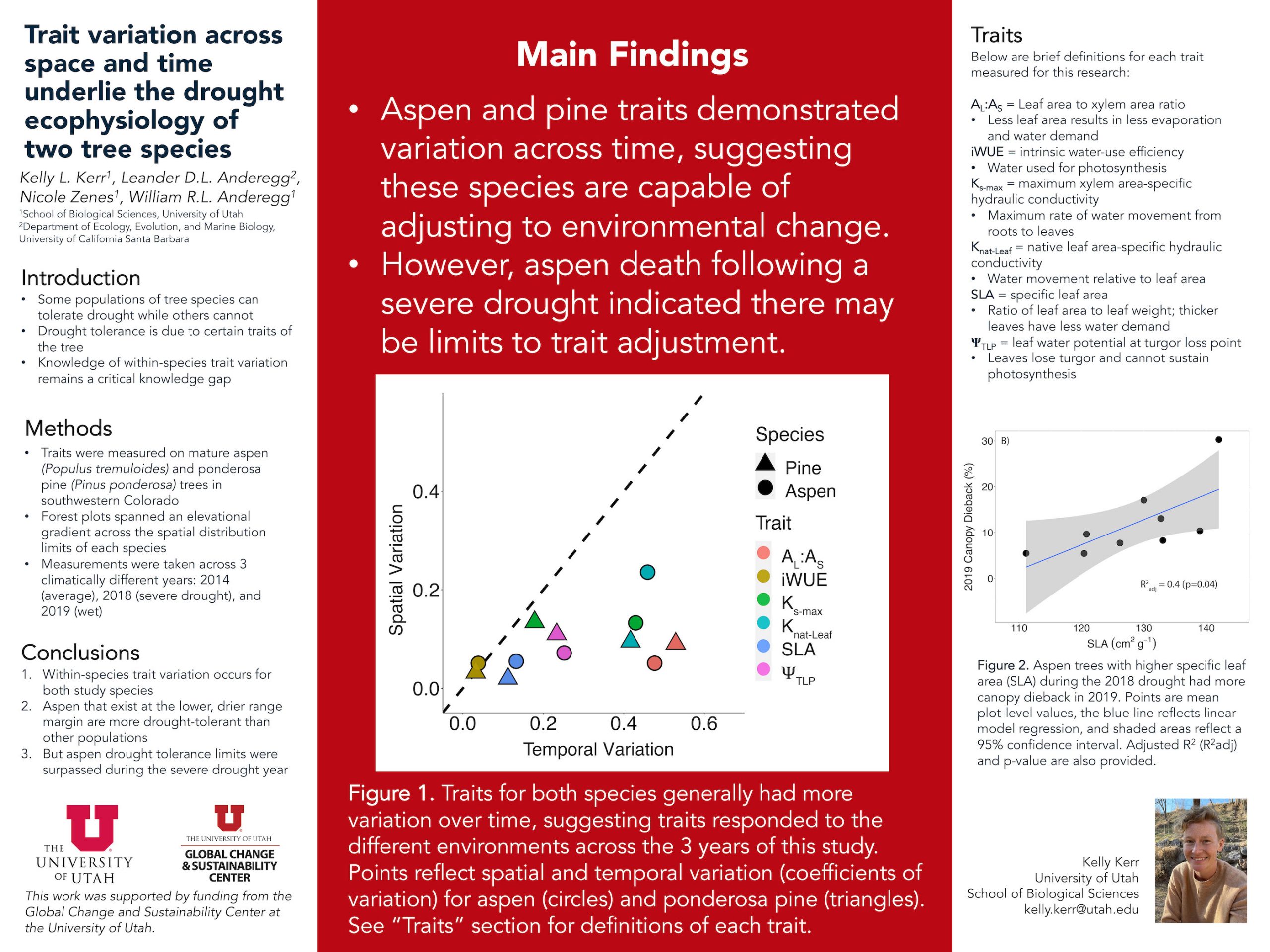Trait variation across space and time underlie the drought ecophysiology of two tree species
-Kelly L. Kerr, Leander D.L. Anderegg, Nicole Zenes, William R.L. Anderegg
[bs_collapse id=”collapse_1e8e-65ef”]
[bs_citem title=”Bio” id=”citem_d079-7778″ parent=”collapse_1e8e-65ef”]I am a Ph.D. candidate in the School of Biological Sciences. My research interests involve understanding how tree species respond to climate change, with a special focus on tree species native to the southwestern US. I can’t get enough of the wonderful Utah wilderness and spent lots of free time exploring the mountains, rivers, and canyons throughout the state. My hobbies include homebrewing beer, playing the banjo (badly), and crochet.[/bs_citem]
[bs_citem title=”Abstract” id=”citem_32e1-7502″ parent=”collapse_1e8e-65ef”]Climate change will likely result in more frequent and severe droughts for southwestern US forests, yet tree species may be able to persist through acclimation and adaptation to warmer and drier conditions. We investigated the drought acclimation potential of aspen and ponderosa pine trees by examining how within-species variation in functional traits influences survival during and mortality following a severe drought. Functional traits were measured on trees in southwestern Colorado across an elevational transect that spanned the distribution limits of each species, and across three climatically different years. Aspen functional traits showed high variation across space and time, yet low elevation aspen trees still died following the 2018 drought. Ponderosa pine functional traits showed low variation across space yet high variation across time, and largely survived the 2018 drought. Results from this work will help improve our ability to model and predict forest responses to climate change.[/bs_citem]
[/bs_collapse]

